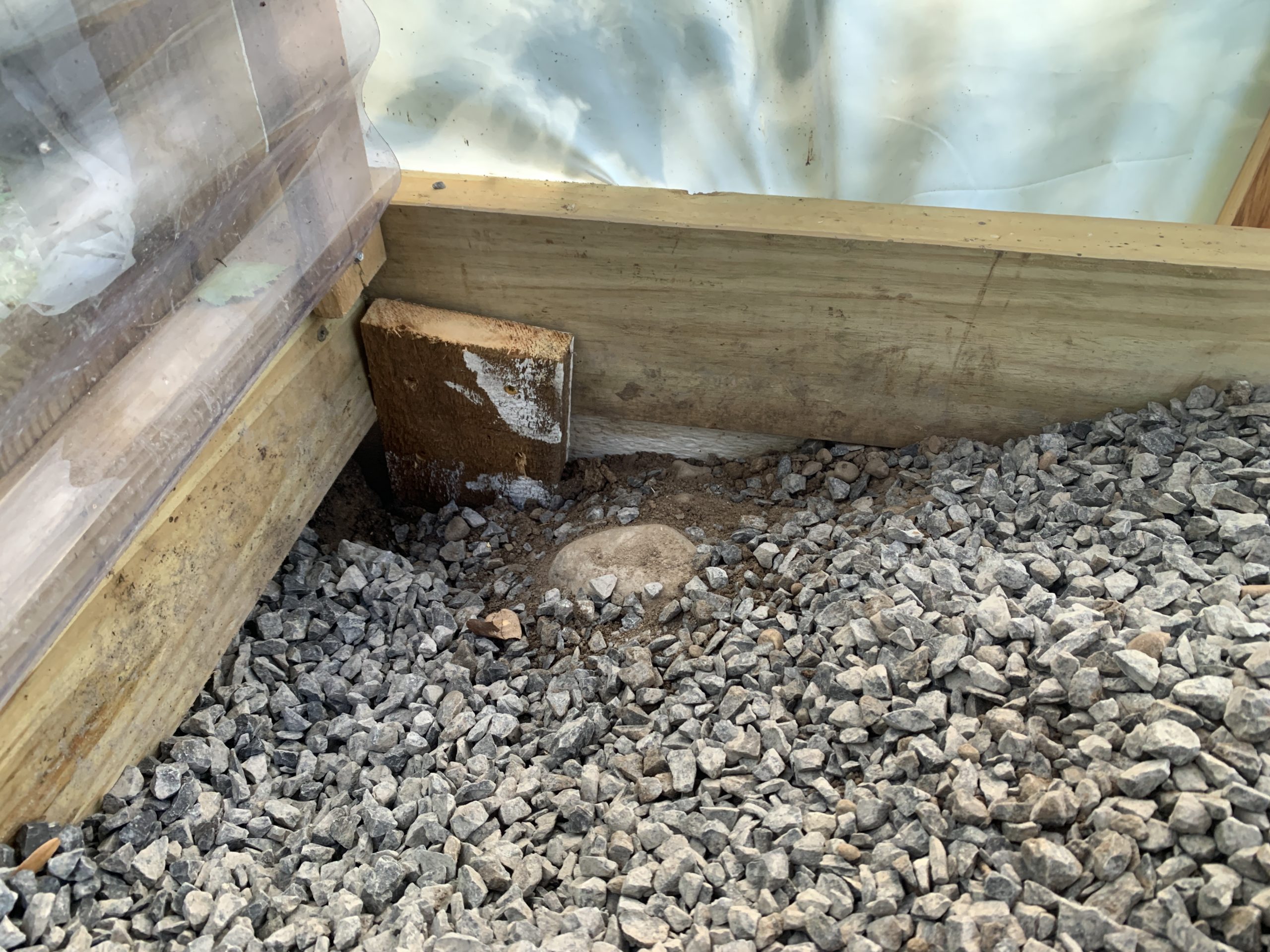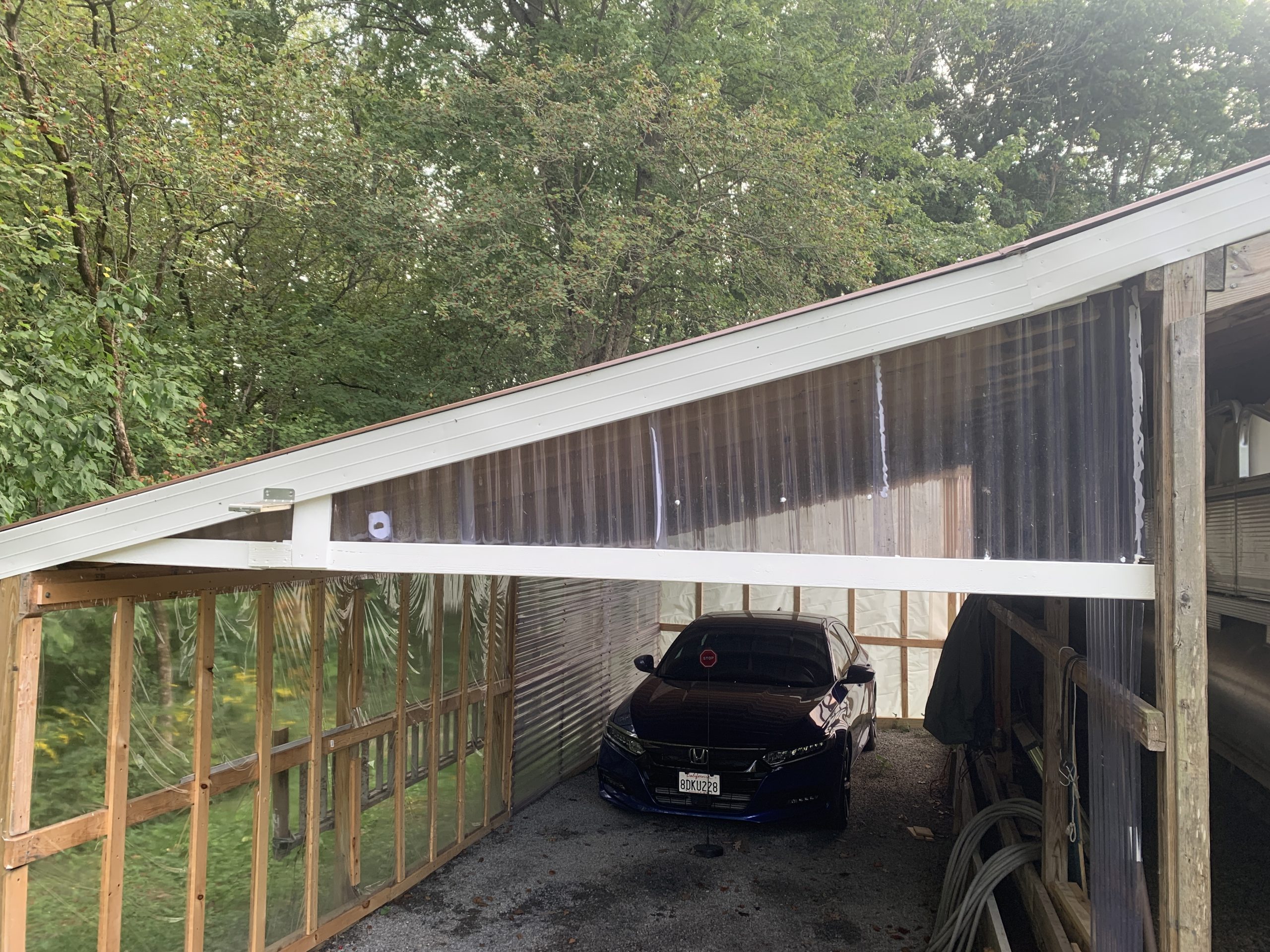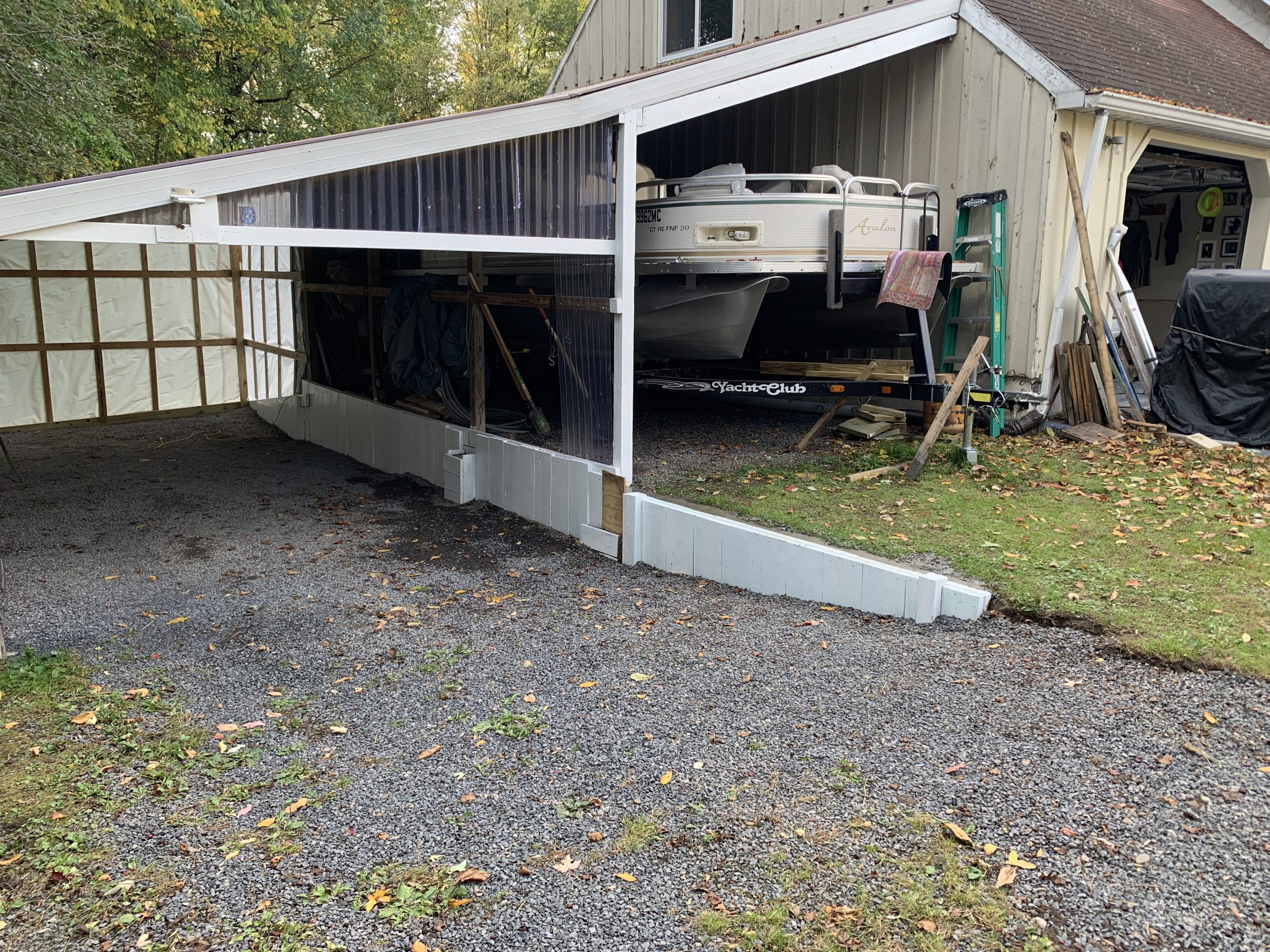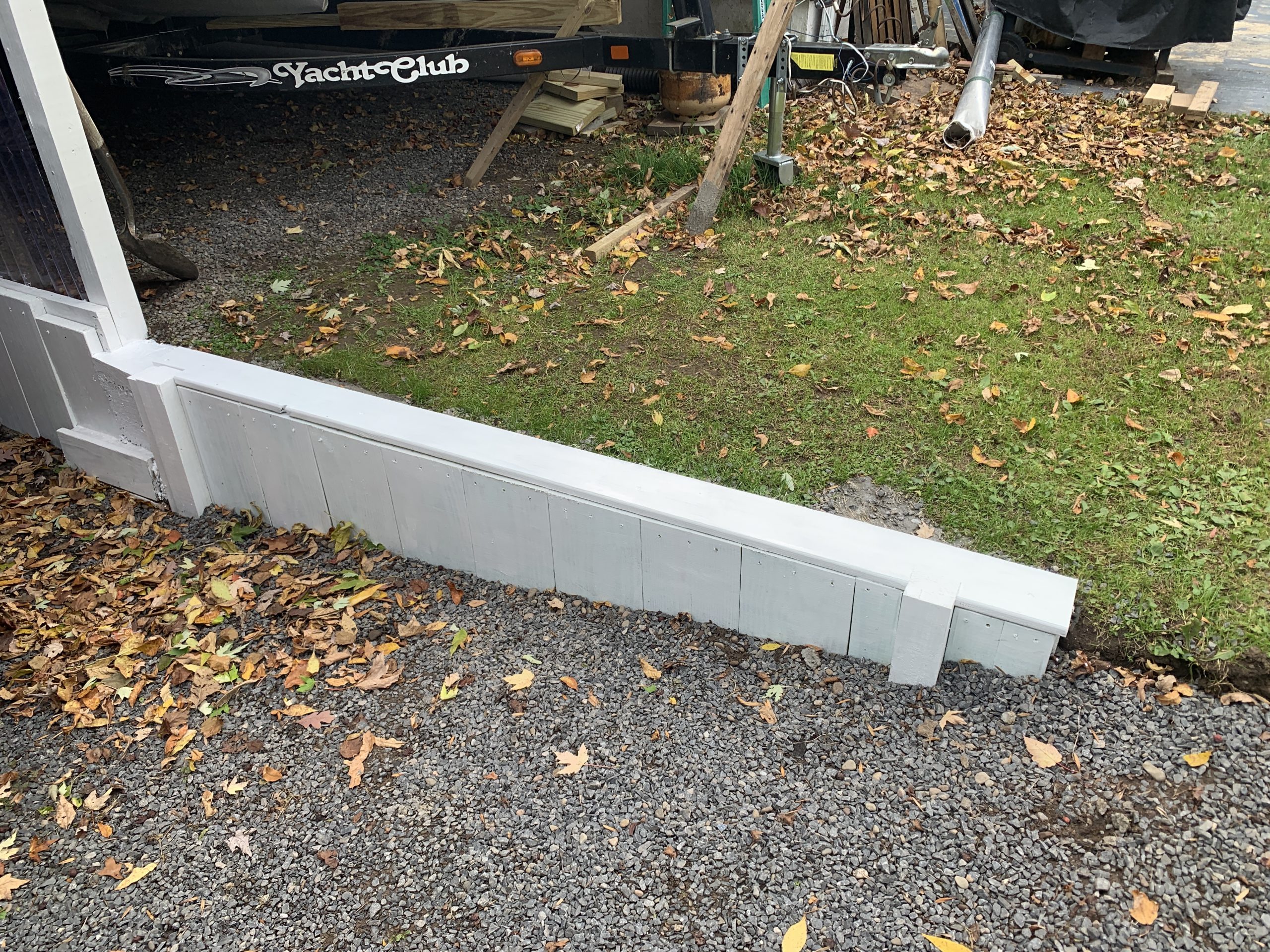It’s been about a year since I built a two (ish) car carport with my Dad. I documented that process here and wanted to give a followup on what worked, what I tweaked, and what I’d change if we did it again.
The good
First off, the carport performed great in the winter. I was worried that the 4/12 pitch wouldn’t be steep enough, but the snow slides right off in big sheets as soon as the sun warms it up. Even when ice forms, there’s enough of a roof overhang that the plastic on the sides hasn’t been damaged.
The 11.5′ width of the carport is great, with plenty of room to get out and maneuver on both sides. And despite just having gravel down, it was easy to get in and out even with some snow on the ground (though not with ice).
Now that we have it, my dad is really happy with the carport, and can’t imagine not having it. It’s great to not have to worry about vehicles exposed to tons of snow and ice, or even just to keep them away from the sun, rain and birds.
Improvements
I did make a few changes here and there. There were two spots on the ground in the front that were always squishy and damp, because they were retaining a lot of water. I dug about 18″ down and it was all dense, thick clay. I filled the hole up with large rocks and some pieces of scrap brick, plus gravel, for drainage, then covered it all with dirt and a topcoat of more gravel. It worked great, they’re firm now and dry out properly.
The back corner had some gravel leaking out because the 2×6 was just above ground level there. I pulled the gravel back, put two treated lumber scraps over the gap, and screwed it all in place. Simple fix.

Since the front of the carport is open, it does let in some weather when the wind comes that direction. I put a 2×4 beam across horizontally about 6’3″ above the ground, then used tin snips to cut a polycarbonate sheet to enclose the gable. This should keep out a lot more of the rain and snow.

The fascia under the roof is mostly protected from weather, but for about an eight foot run in the back, there’s much less overhang (since that’s where we had to build out the addition, versus tying into the old roof) and the wood was showing the weather. I put several coats of paint on the entire length of the fascia as well as the front beam.
All of the changes above took just a few hours all together. The last change I made was more work, which was rebuilding the basic retaining wall I made last year into something nicer and stronger. Nicer, because it would be flush against the upper surface, recovering 8-10″ of width, with much nicer looks. Stronger, because it would have much more support, a lot more fasteners, and most of the backside where it meets the ground was reinforced with concrete.


This project took about a week, but it came out so nice my mom asked if I’d extend it another 8′ out into the front tapering down into the driveway, so I did. Apart from the ridiculous lumber prices due to covid (we actually paid $19 for a 1x6x8 that shouldn’t cost more than $6), it was a great project and looks a lot better.


What I’d change
There are several things I’d do differently if we were doing this again and had perhaps just a touch more budget:
- Slope the entryway with a skidsteer to give a more gradual and even driveway
- Take out more dirt and use a thicker gravel bed for better drainage and less weed growth
- Use polycarb sheets for all siding
- Very light (1″) coating of spray foam on the underside of the roof
That last one might have you scratching your head. Why on earth would you insulate the roof of an open carport? Mainly, for condensation, and secondly for noise. Spray foam is actually pretty common to use now on metal buildings for just these reasons, even if they’re unheated. In the winter, the bottom side of the roof will condense and drip water on your car, or on you, which is a bit irritating. A thin layer of spray foam can correct that, while at the same time dampening noise. The metal roof acts like the surface of a drum, so an apple or acorn hitting the roof can echo loudly. Spray foam will take care of that problem as well. I didn’t know any of this until I saw condensation on our own roof and Googled it. I just cover my car in the winter, which also solves the problem.
Conclusion
This project was a lot of fun and it’s been great to tweak it a bit during this period of downtime, when I’m looking for things to keep me busy anyway. Hope it’s interesting to see the updates, thanks for reading.